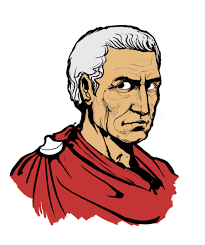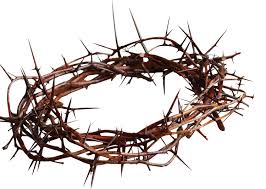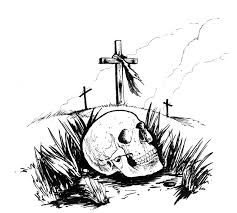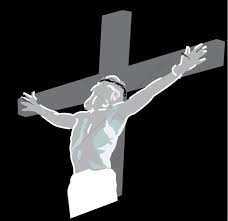Matthew 27:24 – So when Pilate saw that he was gaining nothing but rather that a riot was beginning, he took water and washed his hands before the crowd, saying, "I am innocent of this man's blood; see to it yourselves."
As we noted last time, Pilate had a chance at the very beginning to do the right thing as governor – to throw out the clearly false charges against Jesus the Christ. But he did not do so. He shirked the responsibility associated with his authority.
Instead, he vainly attempted to get some kind of justice for Jesus through the popular opinion of the Jewish crowd. But crowds are fickle. The scribes and Pharisees had incited the emotions of these people to a fever pitch; their lust and rage would accept nothing less than the death of Jesus.
The harder Pilate lobbied to free Jesus, the more agitated the crowd became. Pilate lost control of this trial; he was now in danger of losing control of the city. As we said last time, Rome expected the preservation of public order throughout their domain. If Pilate couldn't ensure it, they would remove him from power and/or execute him.
So in order to keep peace (and pacify his own conscience), he is going to give the crowd what it wants – the death of Jesus. But before doing so, he publicly washes his hands. What is that all about?
The washing of hands in public was a symbolic act intended to show that the 'washer' was innocent of any wrong doing or crime. In this case, Pilate was publicly testifying that he found Jesus to be innocent and he regarded the crucifixion of Jesus as a murder.
Here is my question to you – was this public announcement of the innocence of Jesus and the washing of his hands enough to cleanse Pilate, or was he still guilty of the murder of Jesus? Why or why not?
Answer: Pilate was still guilty. In the Old Testament (Deuteronomy 21:6-7) if the Jewish elders found a dead body, they could publicly wash their hands which was a symbol that they were innocent and had not caused the death of the person in any way. But the most important part of that ritual was that the elder was testifying to man and to God (who knows all hearts) that they were innocent.
In the case of Pilate, he could not stand before God and claim that he was innocent of the blood of Christ, since it was well within his power to halt the crucifixion. Therefore, the washing of his hands could not make him innocent of the blood of Jesus.
Matthew 27:25 – And all the people answered, "His blood be on us and on our children!"
In other words, the Jewish people placed a curse (sometimes called an imprecation) on themselves, their children, their grandchildren, etc. In essence they said, 'If this man is really innocent, and we put him to death as a guilty person, then let the guilt and punishment of this man's blood rest upon us and our posterity'.
Indeed, less than 40 years from the time they spoke this curse upon themselves, it came to pass. When the Jerusalem was taken and the temple destroyed in 71 AD, more than a million Jews died. Thousands died by famine, thousands by disease and thousands by the sword. Josephus tells us that their blood literally ran down the streets of Jerusalem like water. He also tells us that the number of Jews crucified (the same punishment they inflicted upon Jesus), was so great, the Romans had to stop the practice because they ran out of wood to make the beams and space to put the crosses.
It was entirely possible that some of the men standing in front of Pilate that day, calling for the death of Jesus were also some of the very men who died on those crosses and if not them, certainly their children.
However, there is good news for us. The blood of Jesus is very powerful. It has the ability to forgive, to protect and to save. As believers in Jesus, we can pray the blood of Jesus over our children and grandchildren; God will hear and honor that prayer just as surely as he heard and honored the curse the Jews asked him for!
Matthew 27:26 – Then he released for them Barabbas, and having scourged Jesus, delivered him to be crucified.
Have you ever heard of the word 'scapegoat'? It refers to a person or thing that is made to bear the blame for others.
For instance, if a sports team is constantly losing games, the management may fire the coach, even though the players are the ones who are not performing well. In this case, we might say the coach was a scapegoat.
Another example would be in the corporate world. If a design team comes up with a new product that under performs, the manager may be fired even though the company keeps the other employees. In this case, the manager was the scapegoat; he or she bore the blame for the failure of the project.
Did you remember that there was an Old Testament ceremony on the Day of Atonement which used scapegoats to remove the sin of the Israelites?
Leviticus 16:7-10 - And he [Aaron] shall take the two goats, and present them before the LORD at the door of the tabernacle of meeting. And Aaron shall cast lots upon the two goats; one lot for the LORD, and the other lot for the scapegoat. And Aaron shall bring the goat upon which the LORD'S lot fell, and offer him for a sin offering. But the goat, on which the lot fell to be the scapegoat, shall be presented alive before the LORD, to make an atonement with him, and to let him go for a scapegoat into the wilderness.
Basically, the high priest would stand before the people with two goats. He would then reach into an urn where there were two 'lots' and he would place one lot on the head of each goat. The lot identified one goat to die as a sacrifice, and one to be released into the wild. So, two identical goats were presented before the people that day, but each was committed to a very different destiny.
Isn't this a picture of what happened during the trial before Pilate? There were two prisoners that day – Jesus Barabbas, and Jesus called the Christ. Both were presented before the people, who, in a sense cast the lot. One man was let go; the other was sacrificed for the sin of the people.
 What do we know about scourging? It was standard procedure for the Romans to scourge criminals who were condemned to be crucified. It appears that the priests and the Jewish crowd wanted to witness the scourging. Either their hatred had been so ramped up that they wanted to see blood, or they didn't trust Pilate to do as he said.
What do we know about scourging? It was standard procedure for the Romans to scourge criminals who were condemned to be crucified. It appears that the priests and the Jewish crowd wanted to witness the scourging. Either their hatred had been so ramped up that they wanted to see blood, or they didn't trust Pilate to do as he said.For his part, Pilate may have hoped that the bloody, savage beating would pacify the crowd and perhaps prevent the crucifixion.
So Jesus is subjected to a violent brutal whipping. Picture him tied to a low post, which caused his back to bend, stretching out his skin. In the hand of the Roman soldier was a handle with three leather thongs. At the tip of each thong was a jagged piece of bone or metal. Each strike of the whip counted as three stripes; so 13 strikes equaled 39 lashes.
While that sight did not move the Jews to pity, it should have a profound effect upon us. Jesus accepted those stripes on our behalf – so that we could be healed and delivered:
Isaiah 53:5 - But he was wounded for our transgressions, he was bruised for our iniquities: the chastisement of our peace was upon him; and with his stripes we are healed.
When you hear the word "healed", is your thinking limited to the physical realm? It shouldn't be. As fallen humans, we also need mental and emotional healing too.
Are you suffering the pain of a broken relationship? How about the pain of mental abuse or anxiety due to our current circumstances? The stripes of Jesus can provide peace, healing and reconciliation for any and all situations that you are experiencing right now.
Matthew 27:27 – Then the soldiers of the governor took Jesus into the governor's headquarters, and they gathered the whole battalion before him.
The public trial ended in a death sentence. The prisoner, bloody and weak from the scourging, is removed from the public eye and taken inside the courthouse. There a battalion of soldiers (approximately 600 men) took the opportunity to torture, insult and mock Jesus our Savior.
Matthew 27:28-30 – And they stripped him and put a scarlet robe on him, and twisting together a crown of thorns, they put it on his head and put a reed in his right hand. And kneeling before him, they mocked him, saying, "Hail, King of the Jews!" And they spit on him and took the reed and struck him on the head.
The soldiers heard of Jesus' claim to be a king, so they determined to deride him with 'royal honors'. They tore his garments from his raw back, painfully aggravating his cuts. They placed a scarlet robe on him. Most likely, this was a short military cloak worn by Roman officers. However, some people believe this was a cast-off garment from King Herod himself, which the soldiers found and used for this purpose. If so, it added yet another layer of cruelty to their torture.
Their mockery would not be complete without a crown. The soldiers found thorn bush branches and wove them into a crown, pushing the painfully sharp needles into his tender flesh.
Then they placed a reed (a thick, solid cane) into his hand as a scepter. Their blasphemy was complete when they bowed, giving mock obeisance to him as king.
But these cruel and vicious men soon tired of their game. They resorted to spitting on Jesus, then taking the rod and striking him on the head.
As Christians, we love Jesus with our whole heart, soul, mind and strength. So to read and imagine the horrible suffering that he went through just before the cross makes you sick to your stomach. It is painful and difficult to even think about it.
But think about it we must, for it is the foundation of the gospel message. Jesus suffered for one reason and one reason only – to atone for our sin.
The bible makes this clear over and over again:
- He was wounded for our transgressions and bruised for our iniquities; the Lord has laid on him the iniquity of us all (Isaiah 53:5-6).
- He was offered to bear the sins of many (Hebrews 9:28).
- Christ was made a curse for us (Galatians 3:13).
- He, who knew no sin was made sin for us (2 Corinthians 5:21).
- He bore our sins in his own body (I Peter 2:22).
Think of it this way:
- Jesus was scourged that we might be healed through his stripes.
- Though he was innocent, Jesus was condemned so that we who are truly guilty might be acquitted.
- Jesus wore a crown of thorns so that we could wear a crown of glory.
- Jesus was stripped of his clothing so that we could be clothed in everlasting righteousness.
- Jesus was mocked and reviled so that you and I could be honored and blessed.
- He was numbered among the transgressors that you and I might be numbered among the sons of God.
- He died a most painful and disgraceful death, that you and I might have everlasting life.
The suffering (passion) of Christ should never fail to produce feelings of deep praise and thankfulness within our hearts.
Matthew 27:31-32 – And when they had mocked him, they stripped him of the robe and put his own clothes on him and led him away to crucify him. As they went out they found a man of Cyrene, Simon by name. They compelled this man to carry his cross.
It was standard practice for condemned men to carry their own crosses. However, Jesus had to be physically exhausted at this point. He had been up more than 24 hours, with nothing to eat or drink. He had been tried in front of the Sanhedrin and then been abused by the Jews. He stood trial in front of the Gentiles, and was tortured by the Roman soldiers. He had been publicly whipped and probably lost a significant amount of blood.
In order to get him to the place of execution, the Romans forced a passerby, Simon, to help carry the burden. Simon was from Cyrene, a city in Libya (in Africa, just west of Egypt). There was a large Jewish population there and, like all other Jews, they were in the habit of traveling to Jerusalem.
Make no mistake - Simon's assistance was not an act of compassion by the Romans. The soldiers simply did not want Jesus to die from fatigue and blood loss before his public punishment on the cross.
Matthew 27:33-34 – And when they came to a place called Golgotha (which means Place of a Skull), they offered him wine to drink, mixed with gall but when he tasted it, he would not drink it.
The exact location of the place of public execution named Golgotha or Calvary, is hotly disputed among scholars. However, some facts are certain. The bible tells us that the place was outside the walls of Jerusalem, not far from one of the city gates, and near one of the principal roads leading from the city into the country.
Because it was a public place near a major road, the death of Christ could be witnessed by many people. This was certainly important; his death could not have been faked.
Because it was outside the city, it conforms to the pattern of sacrifice set forth in the Old Testament. Under the law, when an animal had been sacrificed and its blood used for a sin offering, the body of the animal was removed from the camp:
Leviticus 16:27 – And the bull for the sin offering and the goat for the sin offering, whose blood was brought in to make atonement in the Holy Place, shall be carried outside the camp.
Likewise, as Jesus was making atonement for our sin by shedding his blood on the cross, he was taken outside the city. In the same place were criminals were sacrificed to satisfy the justice of the government, Jesus was sacrificed to satisfy the justice of God.
Although this it is not a proven fact, some scholars believe that Golgotha got its name because it was not only the place of execution, but the place where the bones and skulls of dead men were heaped together out of the way of daily life, so that people did not come into contact with them and become defiled.
If that is true, it presents a devastating picture of the power of death. Picture the bones disrespectfully piled on the barren earth. Imagine the metallic smell of blood that hung in the air. Hear the screams of hopeless men begging death to come and release them. Picture the rotting carcasses being eaten by birds. No one escaped this place alive.
But this picture also provides an even more powerful picture of the triumph and glory of Jesus! Despite all the rage of hell, he has carried out his mission completely and perfectly. Once he gives up his spirit, he has totally defeated all the powers of darkness! Death thought it had claimed yet another life, but it was wrong – Death could not hold Him! Jesus defeated Death on its own home court! Hallelujah!
Matthew 27:35-36 – And when they had crucified him, they divided his garments among them by casting lots. Then they sat down and kept watch over him there.
In his commentary, Albert Barnes' Notes on the Bible, Mr. Barnes gives us this description of crucifixion:
The manner of the crucifixion was as follows: After the criminal had carried the cross, attended with every possible jibe and insult, to the place of execution, a hole was dug in the earth to receive the foot of it. The cross was laid on the ground; the person condemned to suffer was stripped, and was extended on it, and the soldiers fastened the hands and feet either by nails or thongs. After they had fixed the nails deeply in the wood, they elevated the cross with the agonizing sufferer on it; and, in order to fix it more firmly in the earth, they let it fall violently into the hole which they had dug to receive it; This sudden fall must have given to the person that was nailed to it a most violent and convulsive shock, and greatly increased his sufferings. The crucified person was then suffered to hang, commonly, till pain, exhaustion, thirst, and hunger ended his life. Sometimes the sufferings continued for days; and when friendly death terminated the life, the body was often suffered to remain--a loathsome object, putrefying in the sun, or devoured by the birds.
Further, scholars tell us that there was great physical pain associated with being crucified. The arms were extended as far back as possible and rendered almost immovable. The least motion gave intense pain to the hands, feet and the back which had been lacerated with whips.
The nails were driven through the hands and feet in areas with multiple nerve endings.
Crucifixion prevented the free circulation of blood through the body. More blood was carried out in the arteries than could be returned by the veins. The result was intense pressure and violent pain, particularly in the head.
The pain gradually increased, with absolutely no respite. Death came, but only gradually; it was normal for death to take between three and seven days to claim the victim.
While this suffering was happening, the soldiers were busy dividing the spoil. It was customary to crucify a person naked; the clothes belonged to the executioners. The soldiers divided up his clothes into four parts, but they were unwilling to tear apart his outer garment because it was a seamless, high quality item. For that reason, they cast lots for it (John 19:23-24). This was a fulfillment of scripture:
Psalm 22:18 - They part my garments among them, and cast lots for my clothing.
Jesus died naked and humiliated so that we could wear garments of salvation and robes of righteousness:
Isaiah 61:10 - I will greatly rejoice in the LORD, my soul shall be joyful in my God; for he has clothed me with the garments of salvation, he has covered me with the robe of righteousness.
Matthew 27:37 – And over his head they put the charge against him, which read, "This is Jesus, the King of the Jews."
Again, this was nothing out of the ordinary. It was standard Roman practice to publish the cause of a criminal's death in capital letters, on a sign placed above his head. In this case, it was written in three languages – Greek, Latin and Hebrew (Luke 23:38).
Pilate intended the inscription as a parting shot to the Jews, who forced him to crucify an innocent man. He also considered it an insurance policy; he had public testimony that he dealt strongly with any insurrection. Pilate thought the sign was born out of his own wisdom.
But in reality, it was God's divine hand at work: The message of Christ's true identity was published in languages known to both Jews and Gentiles. This was Jesus Christ, the King of the Jews, the long expected Messiah who had come. So instead of accusing Jesus as a criminal, Pilate introduces Jesus as who he really is – King of all. And very soon, that kingdom would begin to grow and manifest itself.
Matthew 27:38 – Then two robbers were crucified with him, one on the right and one on the left.
Once again, prophesy is fulfilled. Jesus is crucified between two robbers (confederates of Barabbas?), which implies guilt by association. Thus, Jesus is 'numbered' or counted/considered as a transgressor (Isaiah 53:12). Who truly deserved the place of shame between those two sinners? You and I, of course! But because of his great love for us, Jesus died in our place.
In the midst of carrying the burden of our sin, and the unimaginable physical pain he was experiencing, he also had to endure the screams, groans and blasphemies of the two criminals beside him. There was no limit to the cruelty of mankind against our Creator and Savior.
Let me offer you some encouragement, relief and strength:
There are many lessons and insights that we can take away from the events of the passion of Christ. But perhaps one of the most significant is this: His passion should cause us to hate sin. Literally and completely and emphatically HATE IT.
It was our sin that caused his suffering. Our lust, evil tongues and avarice platted the crown of thorns. Our bitterness, envy and rebellion drove the nails into his hands. Our pride, faithlessness, and violence secured his feet to the cross. Our murderous spirit plucked out his beard. Our idolatry and selfishness caused his mocking, beating and shame.
If we have any love at all for our Savior and King, we must hate the sin, our sin, which placed him in the position of suffering; it was for these sins that he shed his perfect blood. Jesus did this out of love for us:
Romans 5:8 - But God commends his love toward us, in that, while we were yet sinners, Christ died for us.
Contemplation of the cross should lead us to love the Lord our God with all of our heart, soul, mind and strength.




